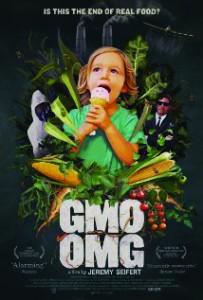If you are what you eat and you fill up with genetically modified organisms (GMOs), you might be in trouble. At least, this is what the documentary GMO OMG seems to suggest.
GMOs are organisms engineered to control specific traits. Given that an increasing number of the foods we eat contain GMOs, director Jeremy Seifert sets out to answer a few of our questions in this 2014 documentary — what are the potential harms of GMO consumption, and what effect do these organisms have on our ecosystem? The film traces Seifert’s journey across the country to learn more about GMOs, where they come from, and why we should care.

Surprisingly, Seifert’s documentary focuses largely on politics, not science. Seifert himself stated in an interview that he “didn’t really dig too deep into the scientific aspect” and instead focused more on the “cultural phenomenon of our widespread ignorance.” In one scene, Seifert is talking with The Organic & Non-GMO Report editor Ken Roseboro about the potential harms of certain GMOs on human health and the environment. As they pass a cornfield, Seifert asks how it is that the corn, a food, is also registered as a pesticide. He questions whether a large GMO manufacturing company, Monsanto, could actually be feeding us pesticides — to which Roseboro replies that in a way, yes.
Although this corn crop has been modified to eliminate the need for synthetic chemicals to ward off pests, its pesticide status begs the question: does this corn, or any other GMO, poison people? Seifert speculates, but he does not provide enough facts or take a clear stance on the matter. GMO OMG, therefore, does not provide any scientific information or deeper exploration of the significance of corn as a pesticide. Instead, it emphasizes the unbelievable idea that foods could double as pesticides. Seifert’s unscientific exploration of the corn issue reflects one of the documentary’s biggest faults — a tendency to focus more on the shock value and exaggerated, preconceived notions of GMOs than on scientific background and studies.
The main takeaway from the documentary is that it is not the GMOs themselves, but the challenges in regulating their use and production, that cause the most anxiety for producers and consumers. While Seifert’s film has emotional appeal, it is important to take into account the real scientific facts associated with topics as controversial as these. If Seifert had included more scientific studies and findings, his position against GMOs could have been much more compelling.
Cover Image: As more of the food we eat starts to contain GMOs, Jeremy Seifert sets out to answer our questions about the potential harms of GMO consumption in this 2014 documentary. Image courtesy of GMO OMG.
